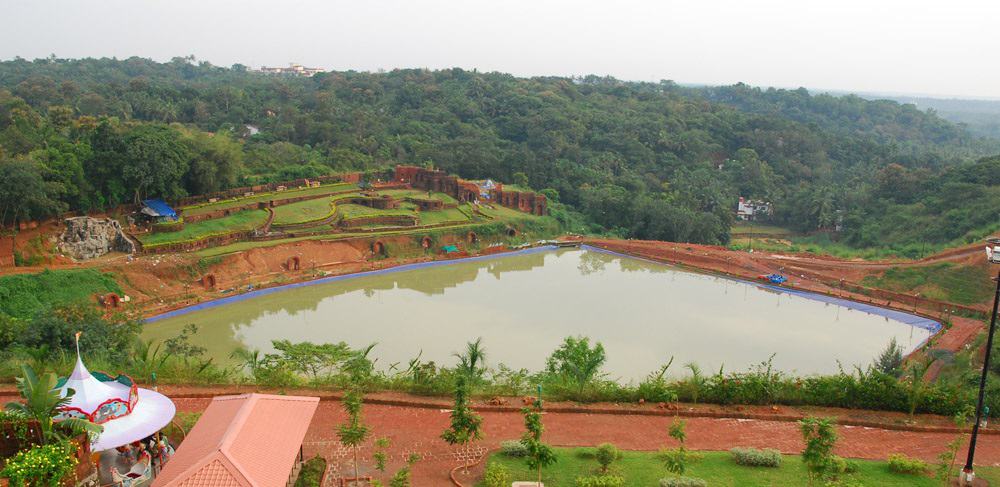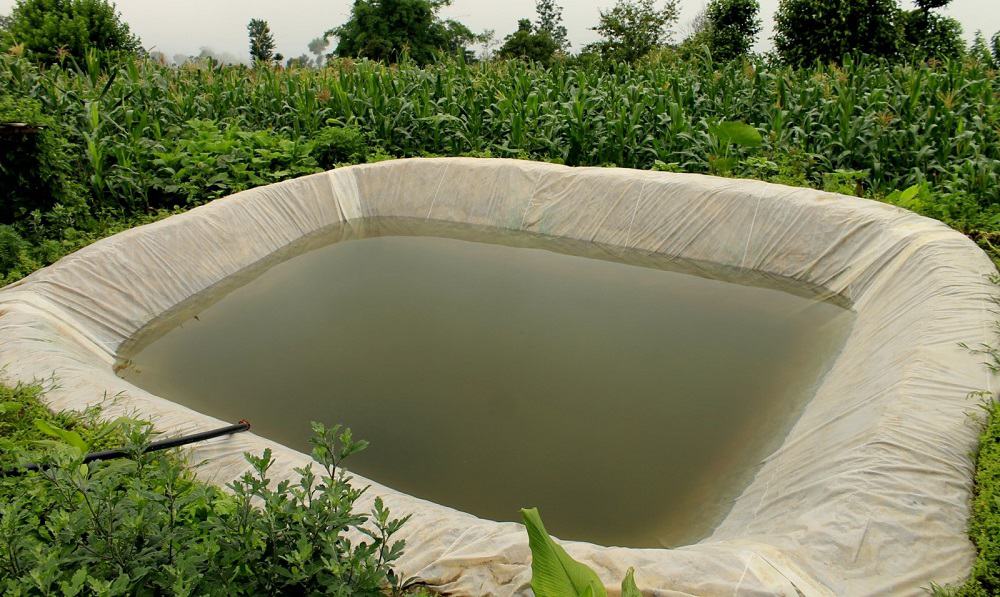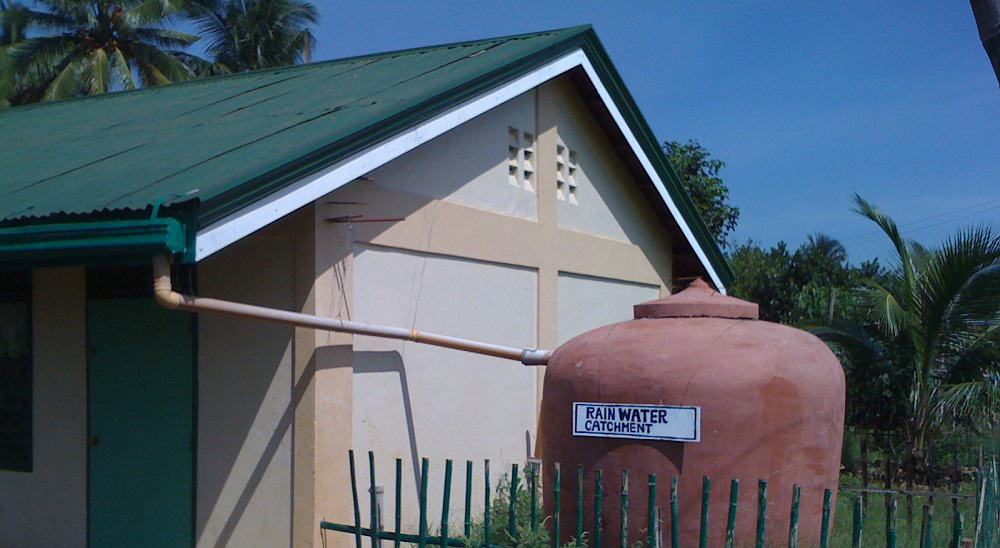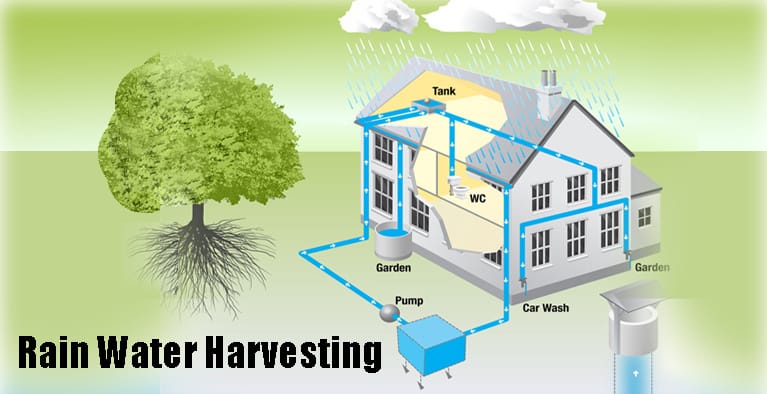The debating topic for the day is “Rain water harvesting – the new number 1 need or a myth?” We will be gradually getting to know whether the process of rainwater harvesting is very much a required thing today, or is it just a myth that rain water harvesting can be implemented. Let’s find out together!
Rain water harvesting – meaning
Directly jumping to our question stated previously won’t be of much help because we must know what is meant by the process of’ rain water harvesting’.
Basically, rainwater harvesting can be defined as a process by which the rainwater is stored by some means, and then later, it is utilized for various purposes as per the requirements.
So, what we are doing is at the time of rainfall; we are either having some tanks or other things placed so that the rainwater gets collected inside them and stored for use in the future. More appropriately, the rainwater is made useful and is utilized properly by the process of rain water harvesting.
Now that we know the process of utilizing the rainwater, the next question coming to our minds must be why to adopt the process and adopt the process. So, we will now explore these two big questions, one by one.
Need for Rainwater harvesting
Before we undertake a process, we must know why we need to do it. Similarly, after knowing rainwater harvesting, it has become important to know the need to harvest rainwater.
It is unknown to any one of us that in the current scenario, due to increased global warming and population pressure, the number of active water resources available on the planet is decreasing continuously.

Conditions have started getting worse because it has been found that the availability of drinking water is very much less than the amount needed to support the life forms on Earth. While the situations being like this, people, although are aware of it, are continuously degrading water and continuously polluting it by all means.
Predictions are made by the intellectuals about the rising possibility of a World War being held soon, and the cause happens to be the decrease in the availability of water resources. Thus, water resources have reached such an extent that a war might be fought among different countries, mainly for this issue.
It makes sense now that we, to keep the peace among the countries, need to save the available water resources before it is too late. Definitely, we cannot dig a well to make use of the underground water, which sounds a bit problematic. So, what we can do is to collect and store the rainwater, and later utilize it.
Hopefully, it is understandable about the need for rain water harvesting.
Now let us move on to the various techniques in which we can harvest rainwater.
Also Read: World Environment Day- Essay for Students
Rain Water harvesting techniques
Majorly, there are two methods or techniques adopted for rainwater harvesting. They are as follows:
- Surface runoff harvesting
- Rooftop rain water harvesting
Let us look at each of these methods separately.
Surface runoff harvesting
We all love to observe the rainwater falling from the surface of our houses every time. This way of falling off the rainwater or the rainwater runoff is termed as surface runoff. That means the rainwater just runs off from the surface, and thus there happens to be a possibility of collecting and storing that run off of the rainwater. This method is called surface runoff harvesting.

This method is a way to implement rainwater harvesting; however, this method does not have many implementations in reality. The problem is the utilization of such water. Generally, this kind of method can be implemented in urban areas, but then the question of water purity arises. Not only this, but the way to store rainwater in such a location is the real challenge.
These two seem to be the main drawbacks of this method. Therefore, we need to shift to some other method for rain water harvesting. However, this method can still be utilized in the future provided that the above-mentioned drawbacks are taken care of thoroughly.
Rooftop Rain Water harvesting
This is the second and the most important method for rainwater harvesting that we are going to understand in this article today.
Rooftop rain water harvesting method involves the collection of rainwater when it falls. So, the rainwater is directly collected in this method before it reaches the ground. Definitely, this method needs to be implemented on the rooftop by the installation of some kind of storage tanks, in a general way. Let us see about the components involved here.
Components involved
The components involved in the implementation of rooftop rain water harvesting method are as follows:
- Catchment
- Transportation
- Flush for the beginning
- Filter
Catchment
A catchment is when the rainwater falls directly, or it can also be said that it is that storage that collects the rain water falling on the surface. A terrace or any kind of open ground area qualify to be the catchment in the rainwater harvesting method.
The main requirement about the catchment is that the area used for that purpose, be it terrace or any open ground, needs a flat surface mainly for proper storage and collection. Therefore, it would be appropriate to add that the catchment is the actual or the main part of harvesting the rainwater.
Transportation
Now the next thing that needs to be done is transportation. We have now stored the rainwater but it is still not usable as such. Hence, it needs to be transported from the rooftop to the ground or from the stored location to the place where it can be made usable.
This is where transportation comes into play. Now, this transportation is made by using pipes mainly with as much strong as the capacity required to transport, which depends on the distance to where the water will get transported to.
However, care must be taken while transporting the water through the pipes. The pipes should be operated carefully and must be replaced from time to time to ensure the safety of the water stored.
Flush for the beginning
Flush for the beginning or first flush is basically a device. As the name suggests, this device is utilized to flush off the rainwater that is transported via the pipes for the first time. This is done to mainly stop the contamination of the stored water by the air.
Another reason to use this device is to remove the large particles of dirt or even sand to get removed from the water when it will finally be directed towards the next component called the filter.
Filters
There is probably no need to mention why we need to have a filter as one of the components in rainwater harvesting methods. The water stored, transported after needs to be purified before it is made available for use to the common people.
Now, the filters adopted for the purification are of various types. Each type of filter is needed to remove a particular kind of substance from the rainwater stored. Hence, we have the following types of filters:
- Sand gravel filter
- Charcoal filter
- PVC – pipe filter
- Sponge filter
Let us now see the working of these filters mentioned above one by one in detail.
Sand gravel filter
From the name, it can be concluded that this filter is used to remove the sand particles from the water. The filter is mainly constructed using bricks. Different layers are constructed using pebbles and bricks to sediment or rather stop the sand particles from continuing into the rainwater flow.
The layers, as mentioned before, are separated by means of thin wires. The entire layer construction of the sand-gravel filter makes it efficient to purify the water to some extent.
Charcoal filter
The guess is right; this filter works to absorb the impurities further present in water after the rainwater is passed through the sand-gravel filter. The charcoal filter can be either set up in a drum or in-situ( nearer to the first filter).
In case a drum is used to implement the charcoal filter, it is filled with charcoal, pebbles, sand, and sometimes gravels. Like the previous filter, the layers need to be properly maintained by separating them through a mesh of thin wires.
This filter also involves removing the odor, if present, in the rainwater thus collected.
PVC – pipe filter
Here, in this type of filter, the pipe used for the purpose is made up of PVC or Poly Vinyl Chloride. The pipe length is kept around 1 to 1.3 meters, while the diameter depends on the rooftop area utilized.
The pipe is mainly composed of three chambers, filled with sand or gravel as per the requirement. This layered or chambered structure is then utilized to remove the further impurities while the rainwater, collected on the rooftop, flows through the pipe passing through each chamber.
However, easy the filter looks, care must be taken about the size, especially about the diameters of the ends of the filter for proper fitting with the pipes utilized for transporting the collected rain water from the terrace rooftop area.
Sponge filter
The construction of this filter is again done by using PVC (Poly Vinyl Chloride). A drum is used to construct the sponge filter.
Inside the drum, there is a layer of sponge, mainly in the middle. Thus, installing this type of filter specifically for rain water harvesting is not too costly and is easily affordable, mainly because of the materials used in construction.
The sponge filter happens to be the final filter that takes care of any other impurities that are not removed when the rainwater is passed through the filters we have come across so far. Besides these filters, the sponge filter is the most frequently utilized one.
Thus after finally passing through all the filters and each of the components, as mentioned step by step above, the rainwater is finally purified and is ready to be used by the people for general purpose or for whichever required purpose it may be.
Thus, in this way, i.e., the methods we studied, we can draw a conclusion that rainwater harvesting is indeed useful and can be implemented. Now, having known about the methods, the details, we need to know how much is the advantage and how much is the disadvantage in the process of rain water harvesting.

Rain water harvesting – advantages and disadvantages
The process of rainwater harvesting, like all other things in nature, has its own advantages and disadvantages.
Advantages
The main advantages of rain water harvesting include the following:
- The storage of rainwater is not too costly; also, the filters implemented are cost-effective.
- The stored water helps to solve the problem of water scarcity to some extent.
- The population pressure on the water gets reduced.
- The process of being eco-friendly does not cause pollution.
- Rainwater harvesting promotes water conservation.
- The technical things employed is rather simple to implement.
- The rainwater as a source of water is being made useful instead of letting it be wasted.
Disadvantages
The related disadvantages in the implementation of rain water harvesting are as follows:
- The main problem concerned with the process is rainwater availability because rainfall is not in one’s hand.
- Though the implementation is cheap, the components involved needs proper maintenance.
- The technology implemented is easy, but for the first time, it always requires a skilled person.
- The major problem is that if the connections are not proper, people’s safety might be in question.
- The pipes used for transportation needs to change and checked from time to time.
- The storing of rainwater is not sufficient enough to solve the problem of water scarcity.
Rain water harvesting – implementation in India
India is a country that is heavily dependent on the agricultural sector. To supply and meet the huge population’s requirements being supported by India, the agricultural sector needs to be speeded up. As we know, water is one of the major requirements to harvest the crops; therefore, it must be made available properly.
Water is needed for proper irrigation supply to the crops. Not only that, for any kind of purpose, water is very much a requirement or the number 1 need, as we started the discussion with.
In such a scenario, whether to support the population pressure or solve water scarcity, rainwater harvesting is one of the most effective methods adopted mainly in the country’s village areas.
This is because the methods we came across just now need ample place for proper implementation. Therefore, village areas are the most suitable ones to apply the process of rain water harvesting efficiently.
In India, the methods and techniques adopted for harvesting rainwater are many. A list of those would appear like:
- Recharge pits
- Tube well
- Recharge well
- Recharge Trench
- Contour bund
- Recharge shaft
- Dug well recharge
Some of these are implemented in village areas while others have the scope of the implementation in the urban areas, although most methods are implemented in village areas only.
There happens to be a lot of future scope in rain water harvesting in India besides the ones mentioned in the article.
Hopefully, this article was able to clear the question, with we started to discuss it.
In conclusion, it can be said that the conservation of water via rain water harvesting is the number 1 need in the current scenario, but the process adopted so far are not too efficient to solve the issue. Therefore, to some extent, the rain water harvesting process is yet a myth, though not much.
People also ask
Q.1 What are the methods of rain water harvesting?
Ans. The two main methods for rain water harvesting are:
- Surface runoff harvesting
- Rooftop rainwater harvesting
Q.2 What is the rain water harvesting?
Ans. It is the way to promote water conservation by collecting the rainwater, purifying it, and then making it available to the common people for their required usage.
Q.3 What is rooftop rain water harvesting?
Ans. Rooftop rainwater harvesting is one of the methods employed to harvest rainwater. In this process, water is stored in an open area, directly when rainfall occurs, and then transporting the collected water to the filters to remove impurities.
Q.4 What are the components of the rooftop rainwater harvesting?
Ans. The components of rooftop rain water harvesting are:
- Catchment
- Transportation
- First, flush
- Filters
Q.5 What is the importance of rain water harvesting?
Ans. The main importance of rainwater harvesting is its effectiveness in saving and using rainwater to cope with the increasing demand for water across the globe.
– Sweta Upadhyay
